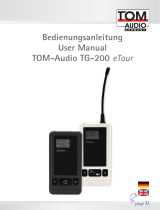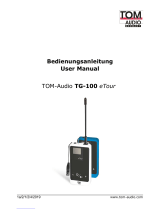
Unauthorized modification and adjustment
Changes or modifications not expressly approved by the party responsi
ble for compliance may void the user’s authority granted by the local
government radio management departments to operate this radio and
should not be made. To comply with the corresponding requirements,
transmitter adjustments should be made only by or under the
supervision of a person certified as technically qualified to perform
transmitter maintenance and repairs in the private land mobile and fixed
services as certified by an organization representative of the user of
those services.Replacement of any transmitter component (crystal,
semiconductor, etc.)
not authorized by the local government radio management departments
equipment authorization for this radio could violate the rules.
FCC Requirements:
•This device complies with part 15 of the FCC Rules. Operation is
subject to the following two conditions:
(1) This device may not cause harmful interference, and
(2) this device must accept any interference received, including
interference that may cause undesired operation.
•(If applicable) This equipment has been tested and found to comply
with the limits for a Class B digital device, pursuant to Part 15 of the
FCC Rules. These limits are designed to provide reasonable protection
against harmful interference in a residential installation.This equipment
generates uses and can radiate radio frequency energy and, if not
installed and used in accordance with the instructions, may cause
harmful interference to radio communications. However, there is no
guarantee that interference will not occur in a particular installation. If
this equipment does cause harmful interference to radio or television
reception, which can be determined by turning the equipment off and
on, the user is encouraged to try to correct the interference by one or
more of the following measures:
-- Reorient or relocate the receiving antenna.
-- Increase the separation between the equipment and receiver.
-- Connect the equipment into an outlet on a circuit different from that to
which the receiver is connected.
-- Consult the dealer or an experienced radio/TV technician for help.
CE Requirements:
•(Simple EU declaration of conformity) Henan Eshow Electronic
Commerce Co.,Ltd declares that the radio equipment type is in
compliance with the essential requirements and other relevant
provisions of RED Directive 2014/53/EU and the ROHS Directive
2011/65/EU and the WEEE Directive 2012/19/EU; the full text of the
09























